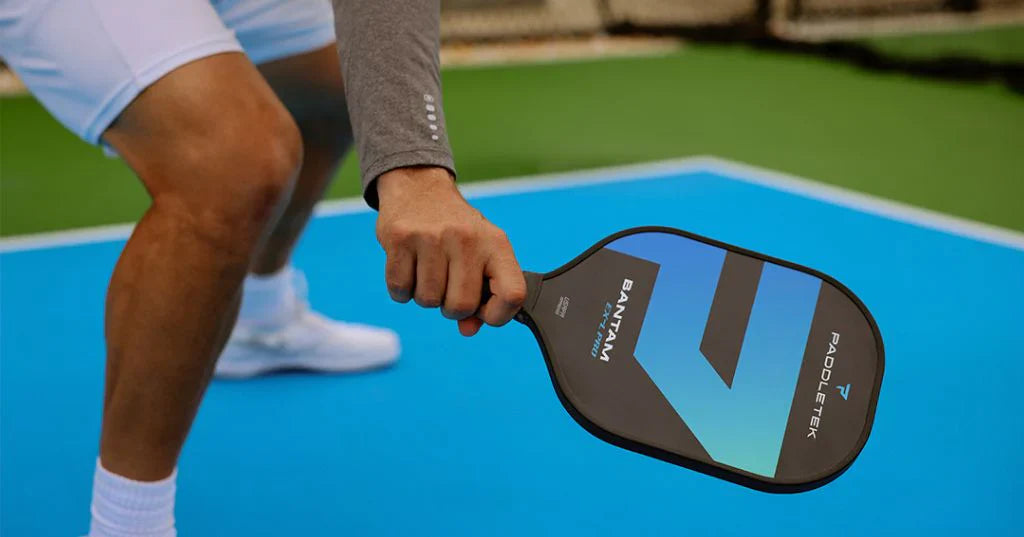Ah, the dink—the gentle, sneaky little shot that makes pickleball so much more than just mini-tennis with a wiffle ball. If pickleball were a movie, the dink would be the scene-stealing sidekick: understated, subtle, and unexpectedly powerful. Mastering the dink is essential if you want to rise through the ranks of pickleball greatness (or at least stop losing to retirees who have perfected it).
But don’t let its delicate name fool you. The dink is as much an art form as it is a strategic weapon. So, grab your paddle, channel your inner Zen master, and let’s dive into the wonderful, infuriating world of the dink.
What Is a Dink, and Why Does It Matter?
A dink is a soft, controlled shot that barely clears the net and lands in your opponent’s kitchen (the no-volley zone). It’s not about power; it’s about finesse. In a game dominated by fast-paced rallies and smashing bangers, the dink is the ultimate plot twist—a shot that slows everything down and demands patience.
Why Dink?
• It Controls the Pace: Dinking forces your opponents to play slow and precise, taking away their chance to smash the ball.
• It’s a Setup Shot: A good dink can lure your opponent into making a mistake, like popping the ball up for an easy put-away.
• It’s Annoying (In a Good Way): There’s nothing more satisfying than watching your opponent sprint to the net, only to awkwardly miss your perfectly placed dink.
How to Dink Like a Pro (Or At Least Like You Know What You’re Doing)
1. The Paddle Angle: Your New Best Friend
Hold your paddle with a slight upward angle. This helps you lift the ball gently over the net instead of firing it into your opponent’s shins (or the crowd, if you’re really off). Imagine you’re cradling a baby bird… that you plan to use to destroy your opponent’s will to win.
2. Less Is More
Dinking isn’t about power; it’s about touch. Think of it like seasoning your food—too much, and you ruin the dish. Too little, and it falls flat. Find the Goldilocks zone of paddle pressure, where the ball clears the net without bouncing too high.
3. Aim for the Feet
A dink landing near your opponent’s feet is a thing of beauty. It’s awkward to return, creates opportunities for errors, and might even cause your opponent to mutter something inappropriate under their breath.
4. Stay Low and Ready
You can’t dink effectively if you’re standing upright like you’re waiting for a bus. Bend your knees, stay balanced, and be ready to move. Think of yourself as a ninja in sneakers, poised for action.
5. Patience, Grasshopper
Dinking is a mental game. You’re not just hitting the ball—you’re lulling your opponent into a false sense of security, waiting for them to make a mistake. Resist the urge to smash the ball unless you’ve set yourself up for a clean winner.
Common Dinking Mistakes (and How to Avoid Them)
Mistake 1: Hitting Too Hard
We get it—you’re excited. But if your dink is bouncing high enough to clear a basketball hoop, you’re in trouble. Your opponent will happily smash it back into next week.
Fix It: Focus on a soft touch. If you’re still struggling, practice with a partner by gently tapping the ball back and forth over the net. Bonus: You’ll look super professional doing it.
Mistake 2: Dinking into the Net
There’s no sadder sight than a dink that doesn’t make it over the net. It’s like tripping on a flat sidewalk—avoidable but embarrassing.
Fix It: Use more lift. Imagine the net is a tiny hurdle, and your job is to clear it by just an inch or two. (But, you know, don’t actually hurdle the net. That’s a different sport.)
Mistake 3: Forgetting the Kitchen Rule
You nail the perfect dink, step into the kitchen to admire your work, and immediately lose the point because you forgot the golden rule: no volleying in the kitchen.
Fix It: Stay out of the kitchen unless the ball bounces first. If you’re tempted to step in, tape a “DO NOT ENTER” sign to the court as a reminder.
Advanced Dinking Tactics (For When You’re Feeling Fancy)
The Cross-Court Dink
Hitting the ball diagonally across the net gives you more room for error and keeps your opponent moving. Bonus points if you can do it while maintaining an air of effortless superiority.
The Fake-Out Dink
Pretend you’re going for a hard shot, then gently dink it instead. Your opponent will commit to defending the smash and end up lunging for a ball that’s already bouncing in the kitchen. Cue evil laughter.
The Long Dink
Place the ball just outside the kitchen, forcing your opponent to backpedal awkwardly. It’s the pickleball equivalent of making someone walk backward on a treadmill.
Why the Dink Is So Satisfying
There’s something deeply rewarding about winning a point with a dink. It’s not about brute strength or flashy moves—it’s about precision, strategy, and a little bit of sass. A well-executed dink says, “I outsmarted you,” without you ever having to say a word.
Plus, let’s be honest: there’s no better feeling than watching your opponent scramble to return a dink, only to send the ball sailing out of bounds. Victory has never been so gentle.
Final Thoughts: Dink Your Heart Out
Mastering the dink takes time, patience, and a willingness to laugh at yourself when you accidentally send the ball flying into the net. But once you’ve got it down, it’s a game-changer. You’ll not only frustrate your opponents but also earn the respect of every seasoned pickleball player on the court.
So get out there, practice your dinks, and remember: in the world of pickleball, sometimes the softest shots hit the hardest. Now go forth and dink like a legend!

